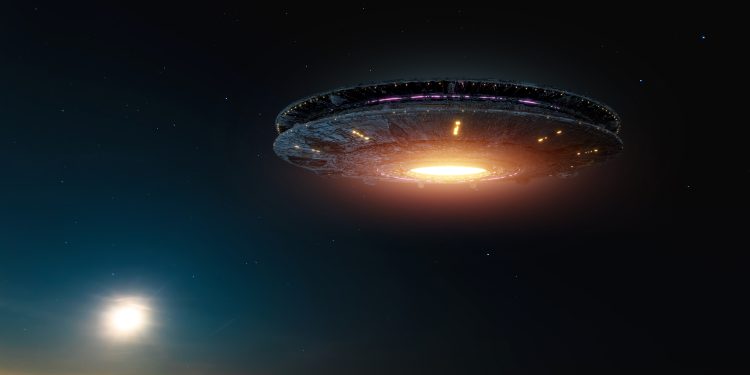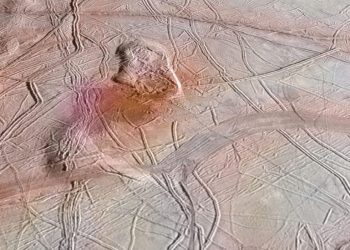Not long ago, Netflix premiered the movie “Don’t Look Up,” kick-starting a global debate about a series of subjects, humankind’s addiction to technology, mobile phones, and, climate change.
The Netflix movie tells the story of astronomers who attempt to warn humanity about an approaching comet that will destroy human civilization.
Although the movie has nothing to do with the current article, its title does, in a way.
When it comes down to the search for evidence of UFOs, we might not need to “Look Up” expecting to catch a glimpse of “saucers” cruising through our skies.
According to Professor Avi Loeb from Harvard University, we should not be so concerned about Looking Up, searching for UFOs.
I had the great pleasure of speaking with Professor Loeb about a plethora of subjects on Kozmos.hr in 2021, where Professor Loeb kindly answered 15 questions I asked about technology, space exploration, and, among other things, the evidence of alien life and alien technology.
Now, in an article from The Hill, professor Loeb dives into the UFO subject one more time, speaking about the different ways we can look for Flying Objects that might turn out to be not from Earth.
Don’t Look Up—kind of
Professor Loeb explains that we are used to looking up when searching for UFOs or UAP—Unidentified Aerial Phenomenon, a new acronym that better describes the sightings.
However, the Harvard astronomer also explains we can search and find UAP by analyzing and looking at satellites images of our planet,
One example is Planet Labs and its fleet of miniature satellites that are used to take images of our planet once a day, with a spatial resolution of a dozen feet per pixel.
Galileo—a project to search for UAP
Professor Loeb also leads the Galileo Project, a systematic scientific search for evidence of Extraterrestrial Technological artifacts. In the article written by Professor Loeb for the Hill, he explains that Galileo will help unravel the nature of UAP.
The project will use Planet Labs’ satellite data and search for UFOs—UAP—from above, in combination with Artificial Intelligence algorithms that can distinguish extraterrestrial equipment from objects such as meteors, airplanes, or atmospheric phenomena.
“Since there are no birds, airplanes, or lightning above the Earth’s atmosphere, any object with an elevation larger than 50 kilometers would appear unusual and merit further analysis,” writes Professor Loeb.
UAP tell-tale signs
The Harvard researcher further explains that we can also identify and distinguish extraterrestrial technology from terrestrial technology by looking at its strange behavior.
By that, Professor Loeb means anomalies including unexpected motion, incredible speeds that our current technology or natural phenomena cannot match, as well as intelligent activity.
“Behavioral anomalies include motion at unprecedented speeds or accelerations, not accessible to human-made or natural phenomena, as well as intelligent activity — seeking information or responding to circumstances in ways that cannot be mimicked by familiar objects,” explains Professor Loeb.
One of the most popular UAP encounters occurred when, in 2004, pilots off the coast of California encountered unidentified aerial vehicles with estimated accelerations ranging from almost 100g to 1000s of gs with no observed air disturbance, no sonic booms, and no evidence of excessive heat commensurate with even the minimal estimated energies.
What then?
But what will happen if we manage to identify extraterrestrial objects in our atmosphere?
According to professor Loeb, we then need to figure out what it—they—want(s).
Understanding why we are being visited—and what the intentions of these visitors are—is of the utmost importance because this will help us engage with them.
However, we need to tread carefully when it comes to communicating with a potential extraterrestrial civilization; an encounter with a visitor not from Earth could easily be interpreted, wards Professor Loeb.
“…especially if the guest’s AI system is far more advanced than our natural intelligence,” explained Professor Loeb.
Beyond our technological understanding
It is only logical to assume that if we are indeed visited by beings that are not from Earth, their technology is far more advanced than ours.
In fact, according to professor Loeb, it is only natural to assume that extraterrestrial hardware could take advantage of physical reality beyond our current understanding.
After all, such hardware would have been crafted by an extraterrestrial civilization whose scientific knowledge is far more advanced than our current understanding of quantum mechanics.
The Kardashev scale
The Kardashev Scale measures a civilization’s level of technological advancement based on the amount of energy it utilizes.
According to this scale, we would fit into a Type I civilization.
A Type I civilization has developed the necessary technology to harness all the energy that falls on a planet from its star.
However, Type II, III civilizations are far more advanced.
A Type II civilization can harness the energy radiated by its own star by building a structure such as a Dyson Sphere or Matrioshka brain—a theoretical megastructure of enormous computational power powered by a Dyson sphere.
A Type III civilization developed the necessary technology to harness the energy on a galactic level, accessing the power comparable to the luminosity of the entire Milky Way.
Do known laws of physics count?
This is perhaps one of the most important questions we need to ask when attempting to study and identify UAP.
Whether airplanes or spacecraft, our current aerial technology produces some exhaust plumes that are visible to an outside observer.
Does this mean that alien technology should too?
The question is both a Yes and a No.
Professor Loeb explains that the known laws of physics and mathematics must apply to all technological civilizations that have existed since the Big Bang, around 13.8 billion years ago.
However, there could be propulsion systems and technology that are simply too advanced for us to even imagine, given our current technological knowledge.
This means that if we encounter extraterrestrial devices that have come to Earth, these might potentially provide a significant advancement to our current technological level, changing the natural evolutionary path of our civilization.
Whatever the case, we should look forward to the systematic scientific approach to the study of UAP by scientists such as Professor Loeb.










